The Characteristics and Contributing Factors of Air Pollution in Nanjing: A Case Study Based on an Unmanned Aerial Vehicle Experiment and Multiple Datasets
Abstract
:1. Introduction
2. UAV Platform and Flow Field Simulation
2.1. Platform
2.2. Flow Field Simulation of UAV
3. Methodology
3.1. Experiment Overview
3.2. Data Collection and Methods
4. Results
4.1. Pollution Episode Summary and Meteorological Factors
4.2. Flight Measurement Features
4.3. Synoptic Situation
4.4. Major Contributions and Transport Pathways in the Pollution Episode
4.5. The Analysis of Satellite Remote Sensing Data
4.5.1. Analysis of the Distribution of the MODIS Aqua Satellite Retrieval AOD Product
4.5.2. Analysis of the Vertical Distribution Characteristics of Aerosols
5. Discussion and Conclusions
Author Contributions
Funding
Acknowledgments
Conflicts of Interest
Appendix A
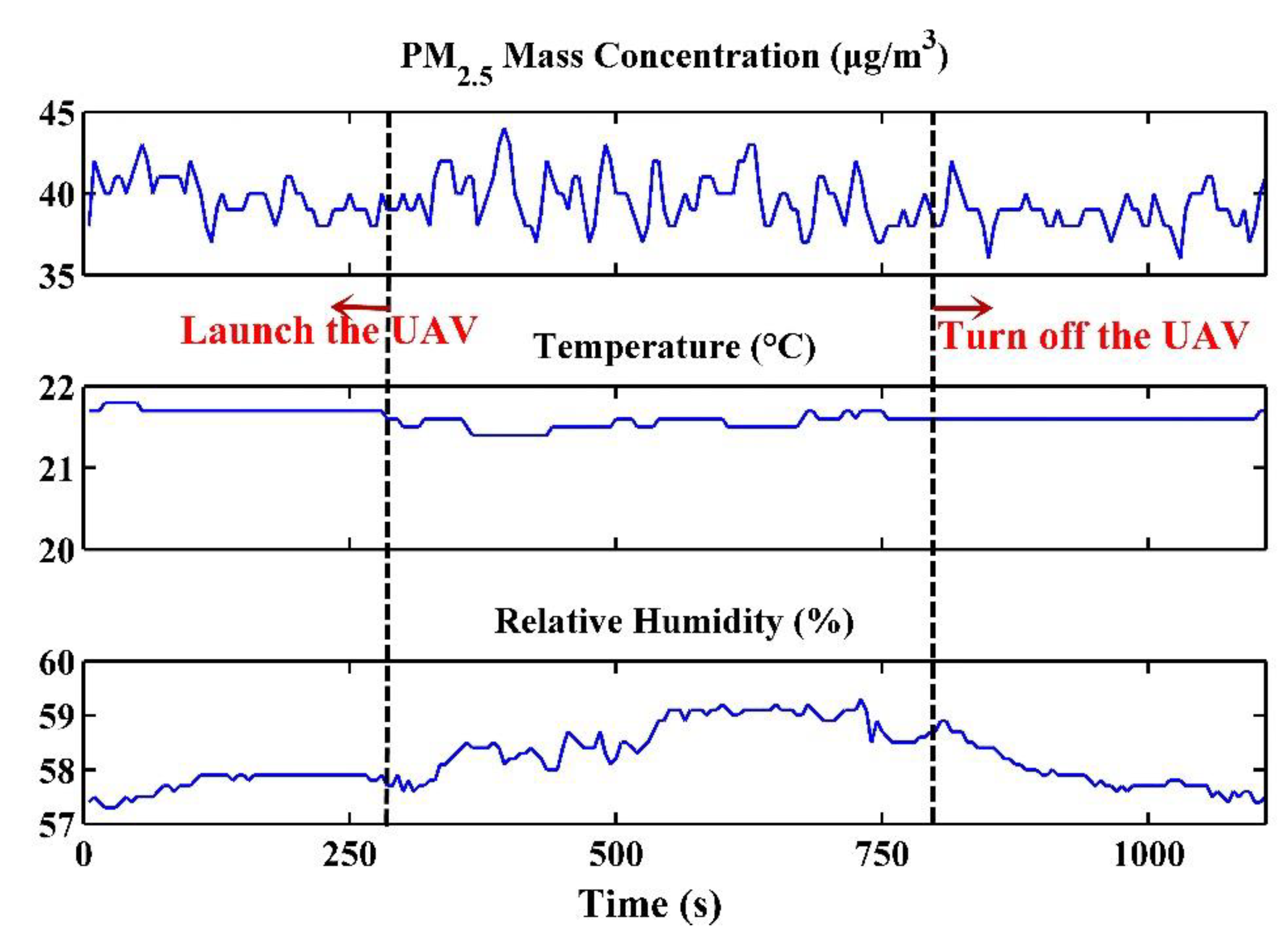
References
- Deng, X.L.; Shi, C.E.; Wu, B.W.; Chen, Z.H.; Nie, S.P.; He, D.Y.; Zhang, H. Analysis of aerosol characteristics and their relationships with meteorological parameters over Anhui province in China. Atmos. Res. 2012, 109, 52–63. [Google Scholar] [CrossRef]
- Deng, X.J.; Tie, X.X.; Wu, D.; Zhou, X.J.; Bi, X.Y.; Tan, H.B.; Li, F.; Jiang, C.L. Long-term trend of visibility and its characterizations in the Pearl River Delta (PRD) region, China. Atmos. Environ. 2008, 42, 1424–1435. [Google Scholar] [CrossRef]
- Zhang, Q.H.; Zhang, J.P.; Xue, H.W. The challenge of improving visibility in Beijing. Atmos. Chem. Phys. 2010, 10, 7821–7827. [Google Scholar] [CrossRef] [Green Version]
- Tie, X.X.; Wu, D.; Brasseur, G.P. Lung cancer mortality and exposure to atmospheric aerosol particles in Guangzhou, China. Atmos. Environ. 2009, 43, 2375–2377. [Google Scholar] [CrossRef]
- Kang, H.Q.; Zhu, B.; Su, J.F.; Wang, H.L.; Zhang, Q.C.; Wang, F. Analysis of a long-lasting haze episode in Nanjing, China. Atmos. Res. 2013, 120, 78–87. [Google Scholar] [CrossRef]
- Pope, C.A.; Brook, R.D.; Burnett, R.T.; Dockery, D.W. How is cardiovascular disease mortality risk affected by duration and intensity of fine particulate exposure? An integration of epidemiologic evidence. Air Qual. Atmos. Health 2011, 4, 5–14. [Google Scholar] [CrossRef]
- Dockery, D.W.; Pope, C.A.; Xu, X.P.; Spengler, J.D.; Ware, J.H.; Fay, M.E.; Ferris, B.G.; Speizer, F.E. An association between air pollution and mortality in six U.S. cities. N. Eng. J. Med. 1993, 329, 1753–1759. [Google Scholar] [CrossRef] [PubMed]
- Wu, D.; Tie, X.X.; Li, C.C.; Lau, A.K.; Huang, J.; Deng, X.J.; Bi, X.Y. An extremely low visibility event over the Guangzhou region: A case study. Atmos. Environ. 2005, 39, 6568–6577. [Google Scholar] [CrossRef]
- Morris, R.E.; Koo, B.; Guenther, A.; Yarwood, G.; McNally, D.; Tesche, T.W.; Tonnesen, G.; Boylan, J.; Brewer, P. Model sensitivity evaluation for organic carbon using two multi-pollutant air quality models that simulate regional haze in the southeastern United States. Atmos. Environ. 2006, 40, 4960–4972. [Google Scholar] [CrossRef] [Green Version]
- Giorgi, F.; Meleux, F. Modelling the regional effects of climate change on air quality. C. R. Geosci. 2007, 339, 721–733. [Google Scholar] [CrossRef]
- Zhang, L.; Wang, T.; Lv, M.Y.; Zhang, Q. On the severe haze in Beijing during January 2013: Unraveling the effects of meteorological anomalies with WRF-Chem. Atmos. Environ. 2015, 104, 11–21. [Google Scholar] [CrossRef]
- Li, L.; Chen, C.H.; Fu, J.S.; Huang, C.; Streets, D.G.; Huang, H.Y.; Zhang, G.F.; Wang, Y.J.; Jang, C.J.; Wang, H.L.; et al. Air quality and emissions in the Yangtze River Delta, China. Atmos. Chem. Phys. 2011, 11, 1621–1639. [Google Scholar] [CrossRef] [Green Version]
- Zeng, S.L.; Zhang, Y. The effect of meteorological elements on continuing heavy air pollution: A case study in the Chengdu area during the 2014 spring festival. Atmosphere 2017, 8, 71. [Google Scholar] [CrossRef]
- Flocas, H.; Kelessis, A.; Helmis, C.; Petrakakis, M.; Zoumakis, M.; Pappas, K. Synoptic and local scale atmospheric circulation associated with air pollution episodes in an urban Mediterranean area. Theor. Appl. Climatol. 2009, 95, 265–277. [Google Scholar] [CrossRef]
- Wang, B.B.; Cheng, Y.Z.; Liu, H.F.; Chai, F.H. A typical production and elimination process of particles in Beijing during early 2008 Olympic Games. Meteorol. Environ. Res. 2011, 2, 70–73. [Google Scholar]
- Liu, X.G.; Li, J.; Qu, Y.; Han, T.; Hou, L.; Gu, J.; Chen, C.; Yang, Y.; Liu, X.; Yang, T.; et al. Formation and evolution mechanism of regional haze: A case study in the megacity Beijing, China. Atmos. Chem. Phys. 2013, 13, 4501–4514. [Google Scholar] [CrossRef]
- Zhang, C.L.; Zhang, L.N.; Wang, B.Z.; Hu, N.; Fan, S.Y. Analysis and modeling of a long-lasting fog event over Beijing in February 2007. J. Meteorol. Res. 2010, 24, 426–440. [Google Scholar]
- Kral, S.T.; Reuder, J.; Vihma, T.; Suomi, I.; O’Connor, E.; Kouznetsov, R.; Wrenger, B.; Rautenberg, A.; Urbancic, G.; Jonassen, M.O.; et al. Innovative Strategies for Observations in the Arctic Atmospheric Boundary Layer (ISOBAR)—The Hailuoto 2017 Campaign. Atmosphere 2018, 9, 268. [Google Scholar] [CrossRef]
- Hemingway, B.L.; Frazier, A.E.; Elbing, B.R.; Jacob, J.D. Vertical sampling scales for atmospheric boundary layer measurements from small unmanned aircraft systems (sUAS). Atmosphere 2017, 8, 176. [Google Scholar] [CrossRef]
- Witte, B.M.; Singler, R.F.; Bailey, S.C.C. Development of an unmanned aerial vehicle for the measurement of turbulence in the atmospheric boundary layer. Atmosphere 2017, 8, 195. [Google Scholar] [CrossRef]
- Schuyler, T.J.; Guzman, M.I. Unmanned aerial systems for monitoring trace tropospheric gases. Atmosphere 2017, 8, 206. [Google Scholar] [CrossRef]
- Jacob, J.D.; Chilson, P.B.; Houston, A.L.; Smith, S.W. Considerations for atmospheric measurements with small unmanned Aircraft systems. Atmosphere 2018, 9, 252. [Google Scholar] [CrossRef]
- Tan, S.C.; Li, J.W.; Gao, H.W.; Wang, H.; Che, H.Z.; Chen, B. Satellite-observed transport of dust to the East China sea and the North Pacific Subtropical Gyre: Contribution of dust to the increase in Chlorophyll during spring 2010. Atmosphere 2016, 7, 152. [Google Scholar] [CrossRef]
- Huang, Z.W.; Huang, J.P.; Bi, J.R.; Wang, G.Y.; Wang, W.C.; Fu, Q.; Li, Z.Q.; Tsay, S.C.; Shi, J.S. Dust aerosol vertical structure measurements using three MPL lidars during 2008 China-U.S. joint dust field experiment. J. Geophys. Res. 2010, 115, 1307–1314. [Google Scholar] [CrossRef]
- Huang, J.P.; Chen, B.; Minnis, P.; Liu, J.J. Global vertical distribution and variability of dust aerosol optical depth derived from CALIPSO Measurements. In Proceedings of the 11th International Biorelated Polymer Symposium, 243rd National Spring Meeting of the American-Chemical-Society (ACS), San Diego, CA, USA, 25–29 March 2012. [Google Scholar]
- He, Y.B.; Gu, Z.Q.; Li, W.P.; Liu, Y.C. Comparison Investigation of Typical Turbulence Models for Numerical Simulation of Automobile External Flow Field. J. Syst. Simul. 2012, 24, 467–472. [Google Scholar]
- Wilcox, D.A. Simulation of transition with a two-equation turbulence model. AIAA J. 1994, 32, 247–255. [Google Scholar] [CrossRef]
- Wilcox, D.C. Turbulence modeling for CFD; In DCW Industries; DCW Industries, Inc.: La Canada, CA, USA, 2006. [Google Scholar]
- Chen, W.; Wang, F.; Xiao, G.; Wu, K.; Zhang, S. Air Quality of Beijing and Impacts of the New Ambient Air Quality Standard. Atmosphere 2015, 6, 1243–1258. [Google Scholar] [CrossRef] [Green Version]
- Nozaki, K.Y. Mixing depth model using hourly surface observations; In Report 7053; USAF Environmental Technical Application Center: Scott AFB, IL, USA, 1973. [Google Scholar]
- Gautam, R.; Liu, Z.Y.; Singh, R.P.; Hsu, N.C. Two contrasting dust-dominant periods over India observed from MODIS and CALIPSO data. Geophys. Res. Lett. 2009, 36, 150–164. [Google Scholar] [CrossRef]
- Kittaka, C.; Winker, D.M.; Vaughan, M.A.; Omar, A.; Remer, L.A. Intercomparison of column aerosol optical depths from CALIPSO and MODIS-Aqua. Atmos. Meas. Tech. 2011, 4, 131–141. [Google Scholar] [CrossRef] [Green Version]
- Campbell, J.R.; Reid, J.S.; Westphal, D.L.; Zhang, J.L.; Tackett, J.L.; Chew, B.N.; Welton, E.J.; Shimizu, A.; Sugimoto, N.; Aoki, K.; et al. Characterizing the vertical profile of aerosol particle extinction and linear depolarization over Southeast Asia and the Maritime Continent: The 2007–2009 view from CALIOP. Atmos. Res. 2013, 122, 520–543. [Google Scholar] [CrossRef]
- Liu, D.Y.; Liu, X.J.; Wang, H.B.; Li, Y.; Kang, Z.M.; Cao, L.; Yu, X.N.; Chen, H. A New Type of Haze? The December 2015 Purple (Magenta) Haze Event in Nanjing, China. Atmosphere 2017, 8, 76. [Google Scholar] [CrossRef]
- Chen, J.; Zhao, C.S.; Ma, N.; Liu, P.F.; Göbel, T.; Hallbauer, E.; Deng, Z.Z.; Ran, L.; Xu, W.Y.; Liang, Z.; et al. A parameterization of low visibilities for hazy days in the North China Plain. Atmos. Chem. Phys. 2012, 12, 4935–4950. [Google Scholar] [CrossRef] [Green Version]
- Wu, D.; Zhang, F.; Ge, X.; Yang, M.; Xia, J.; Liu, G.; Li, F. Chemical and Light Extinction Characteristics of Atmospheric Aerosols in Suburban Nanjing, China. Atmosphere 2017, 8, 149. [Google Scholar] [CrossRef]
- Fu, X.; Wang, S.X.; Zhao, B.; Xing, J.; Cheng, Z.; Liu, H.; Hao, J.M. Emission inventory of primary pollutants and chemical speciation in 2010 for the Yangtze River Delta region, China. Atmos. Environ. 2013, 70, 39–50. [Google Scholar] [CrossRef]

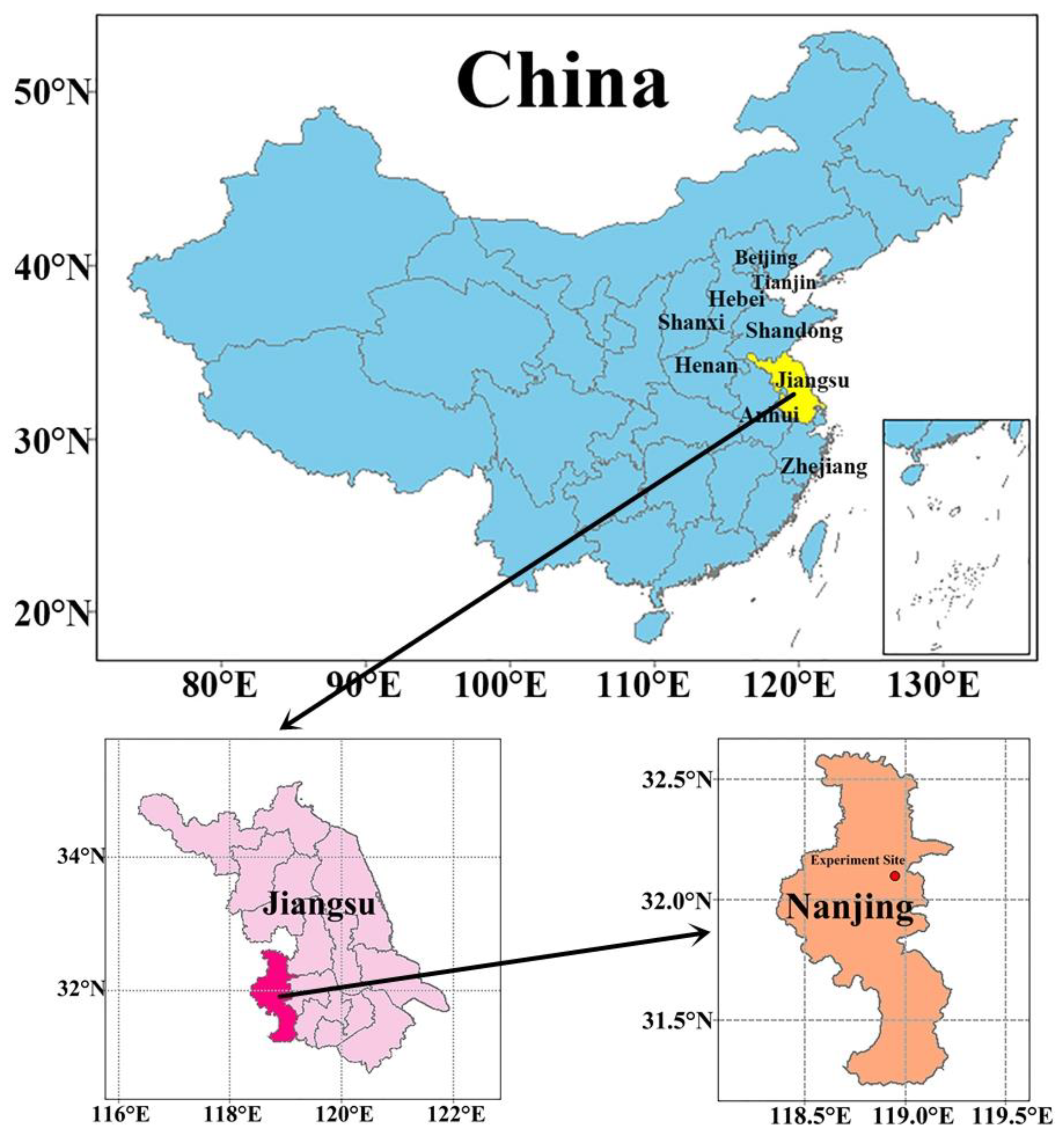
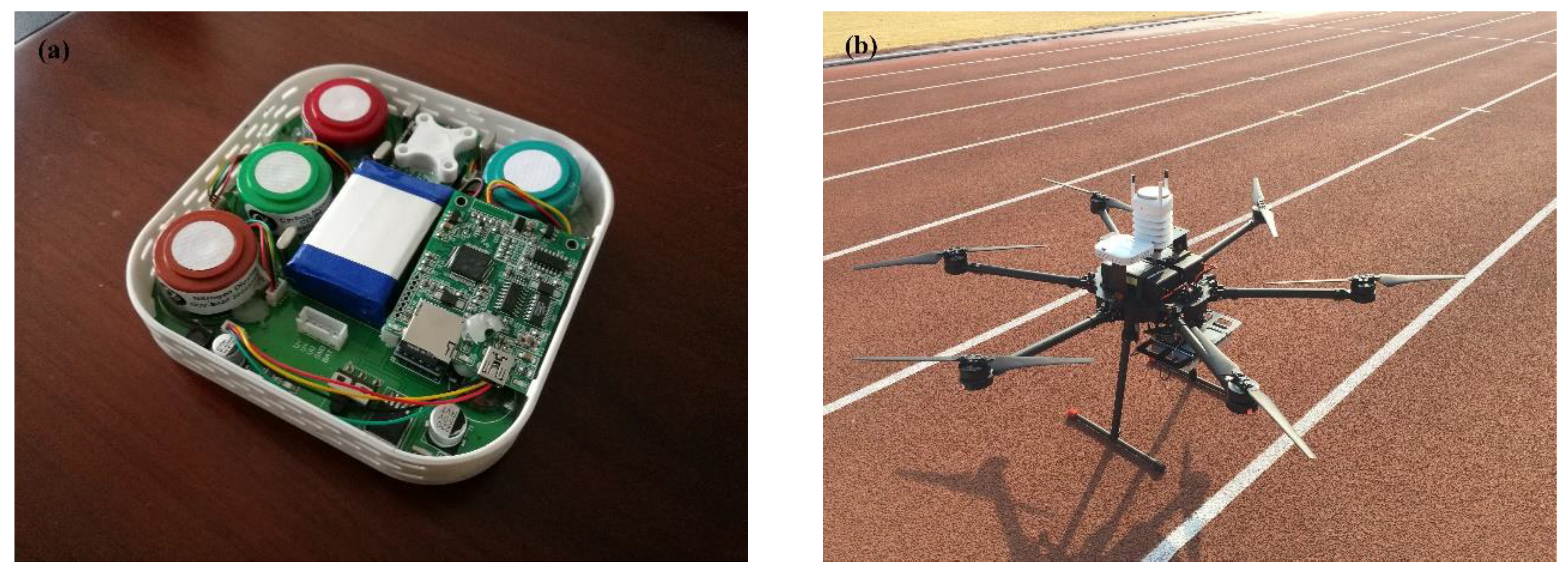
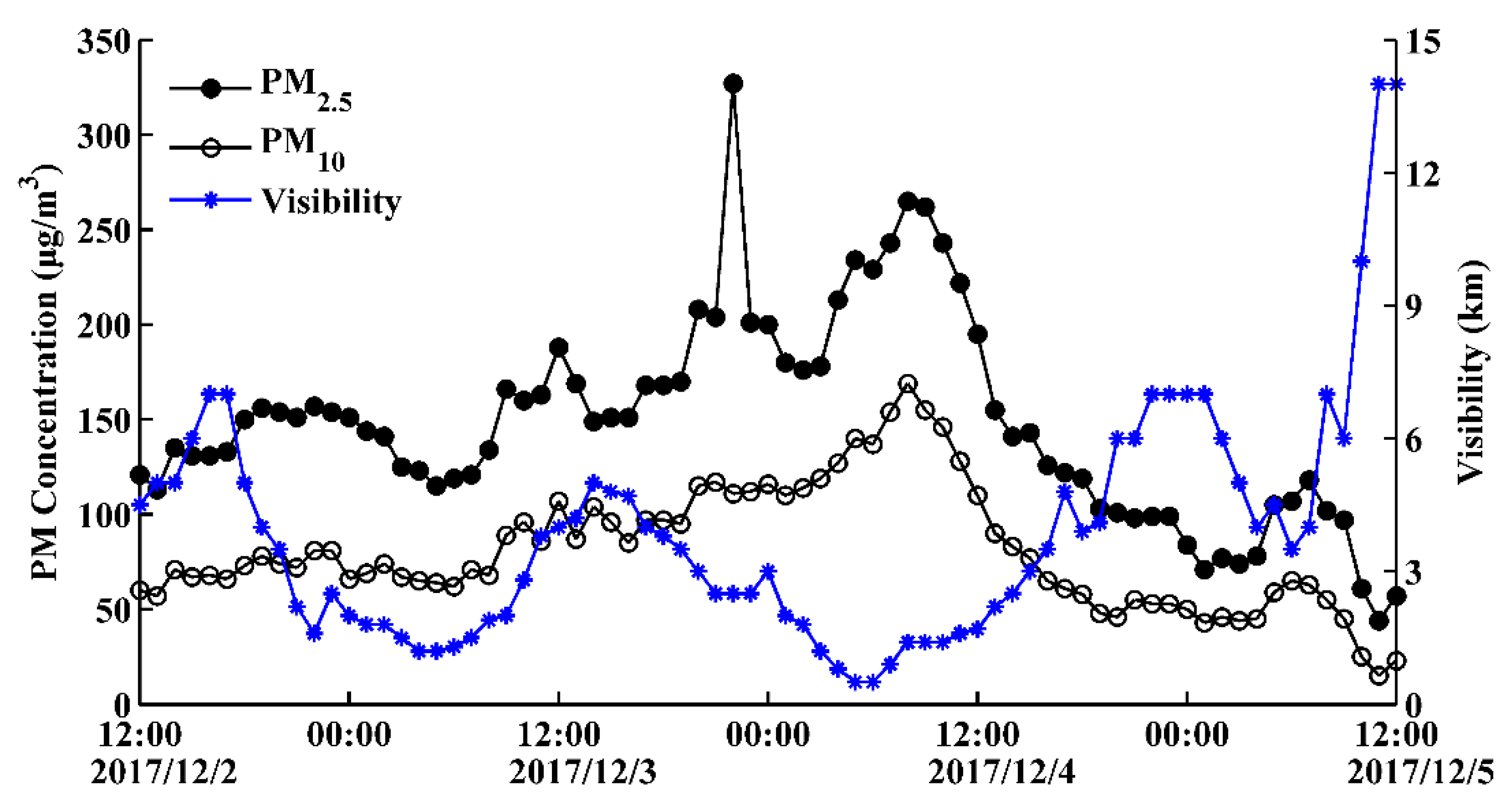
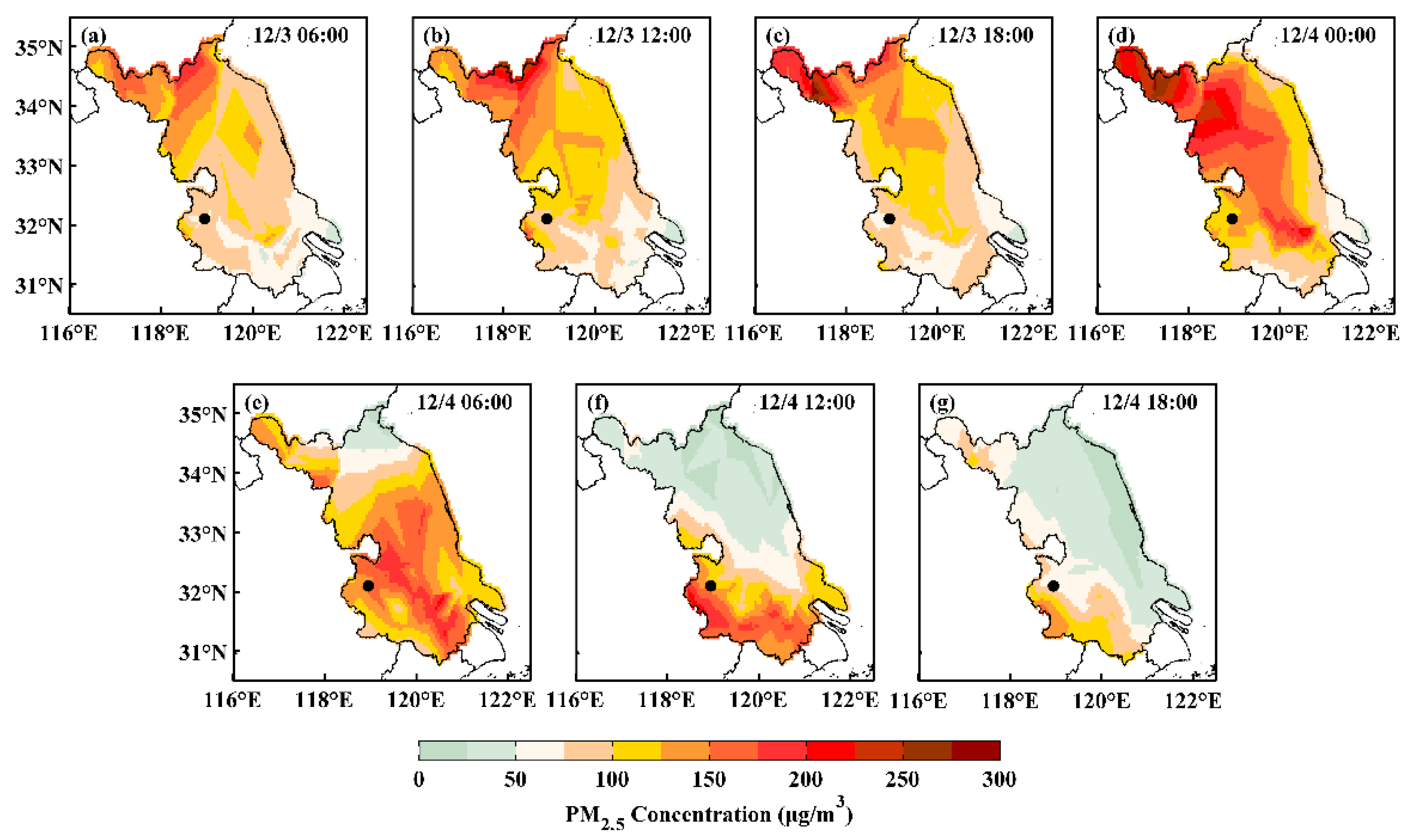
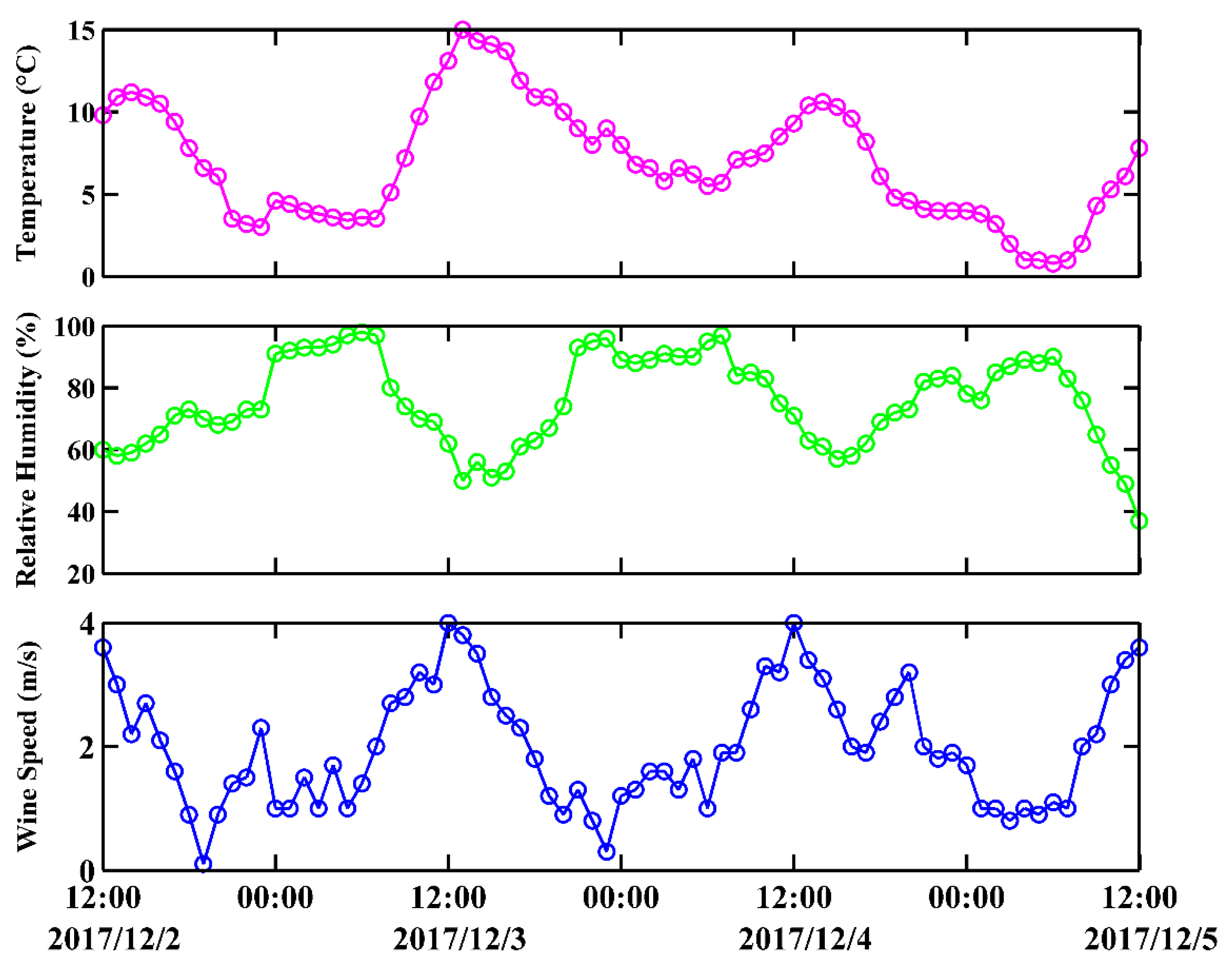
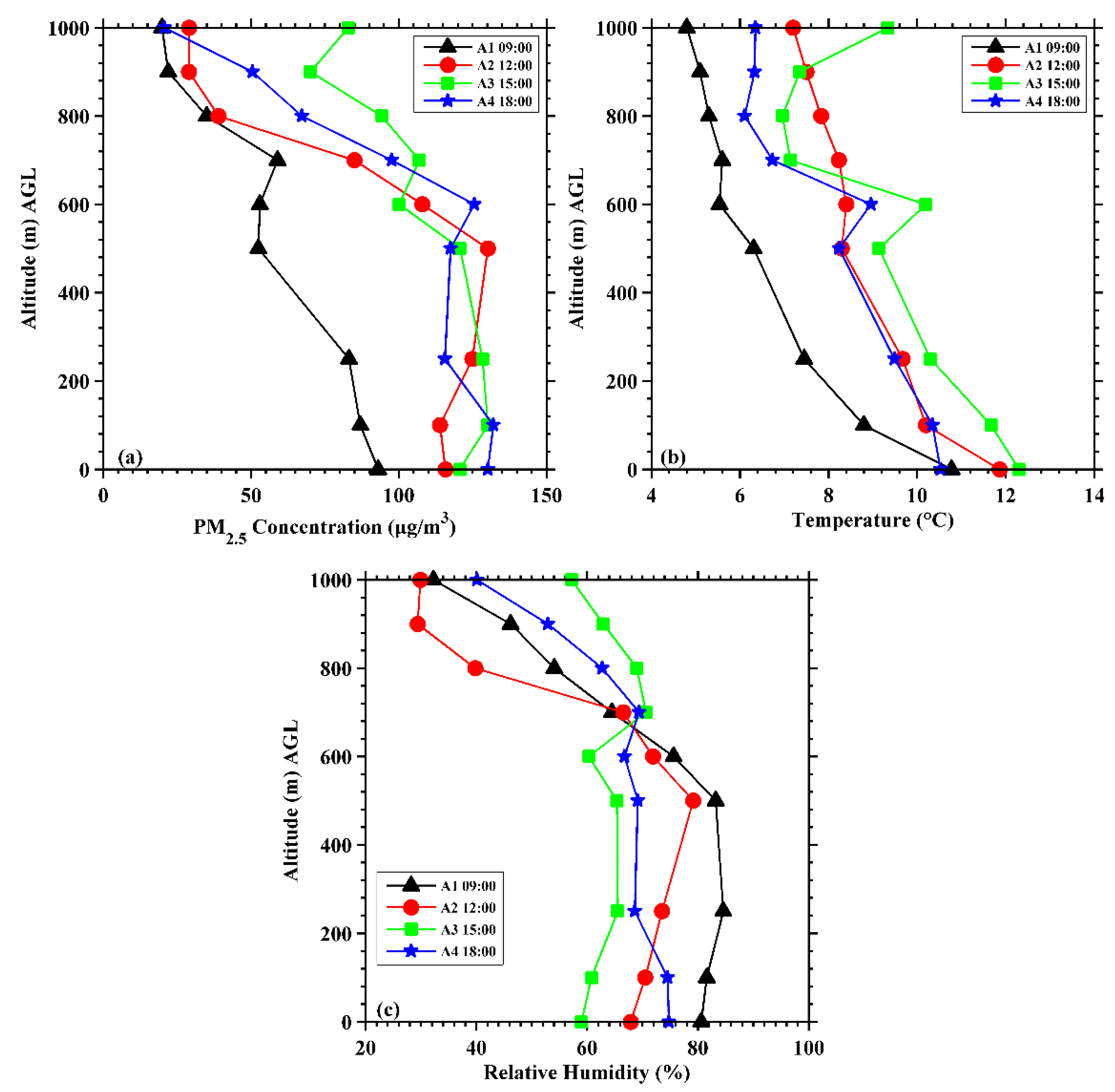
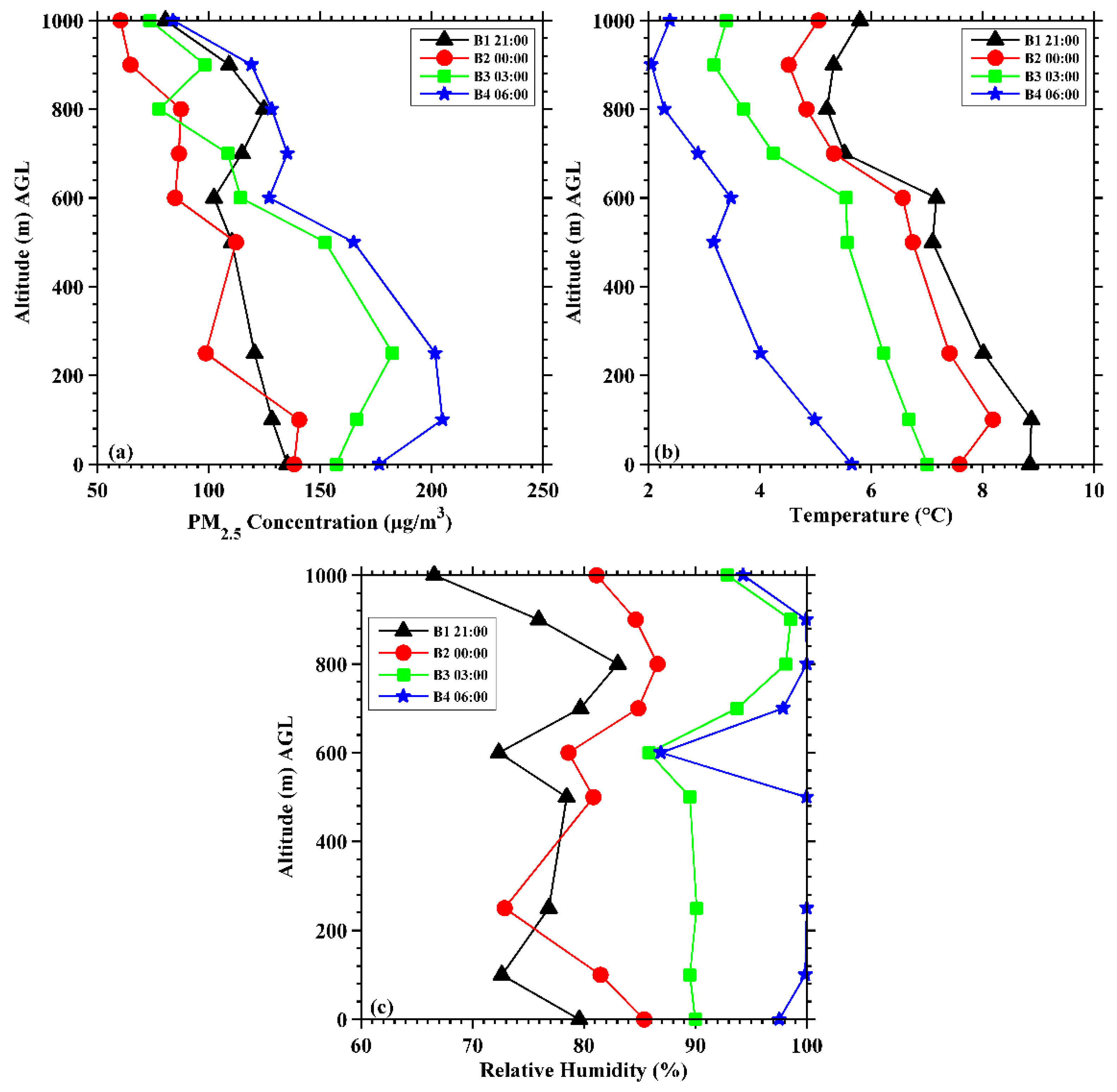
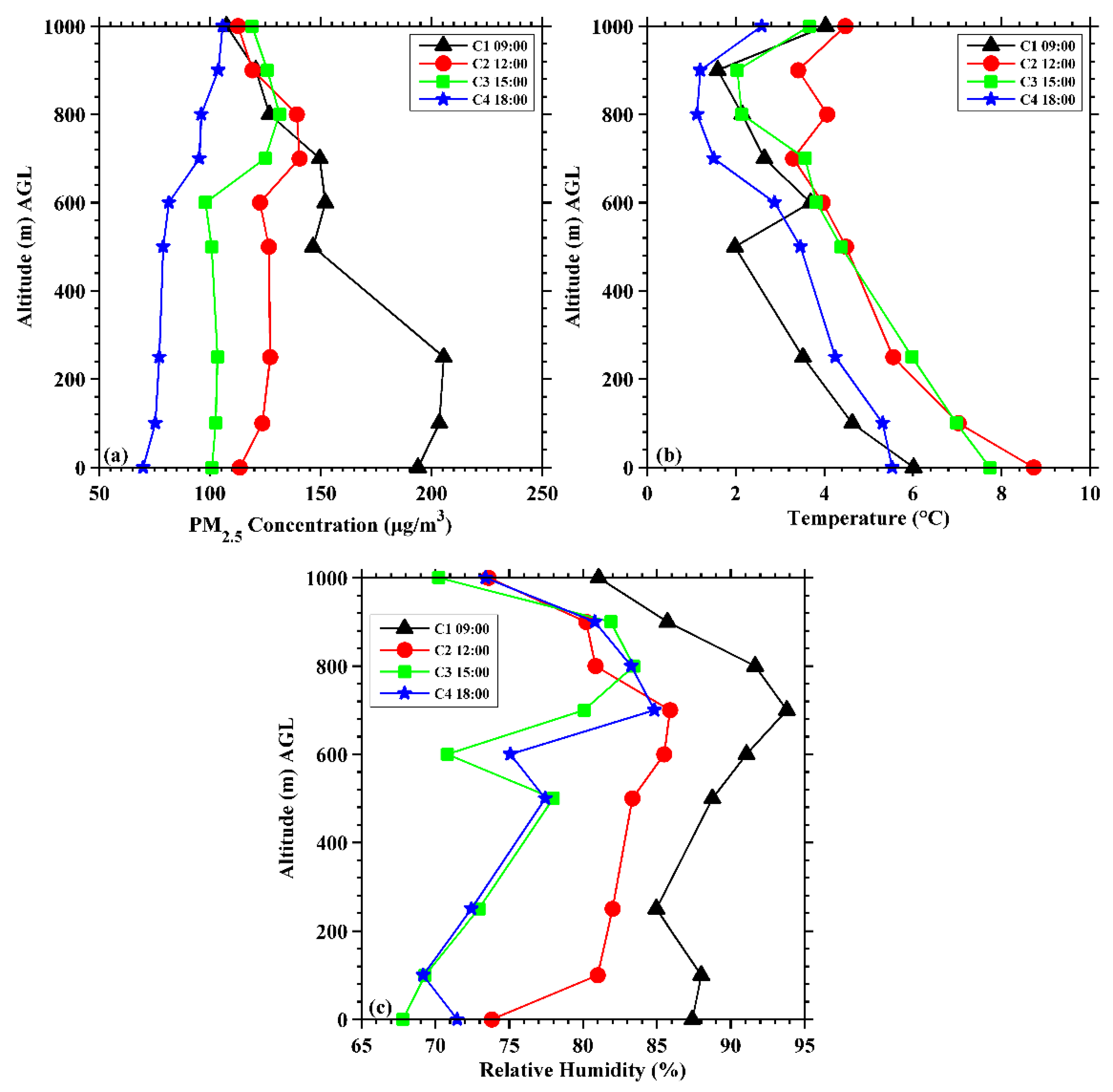
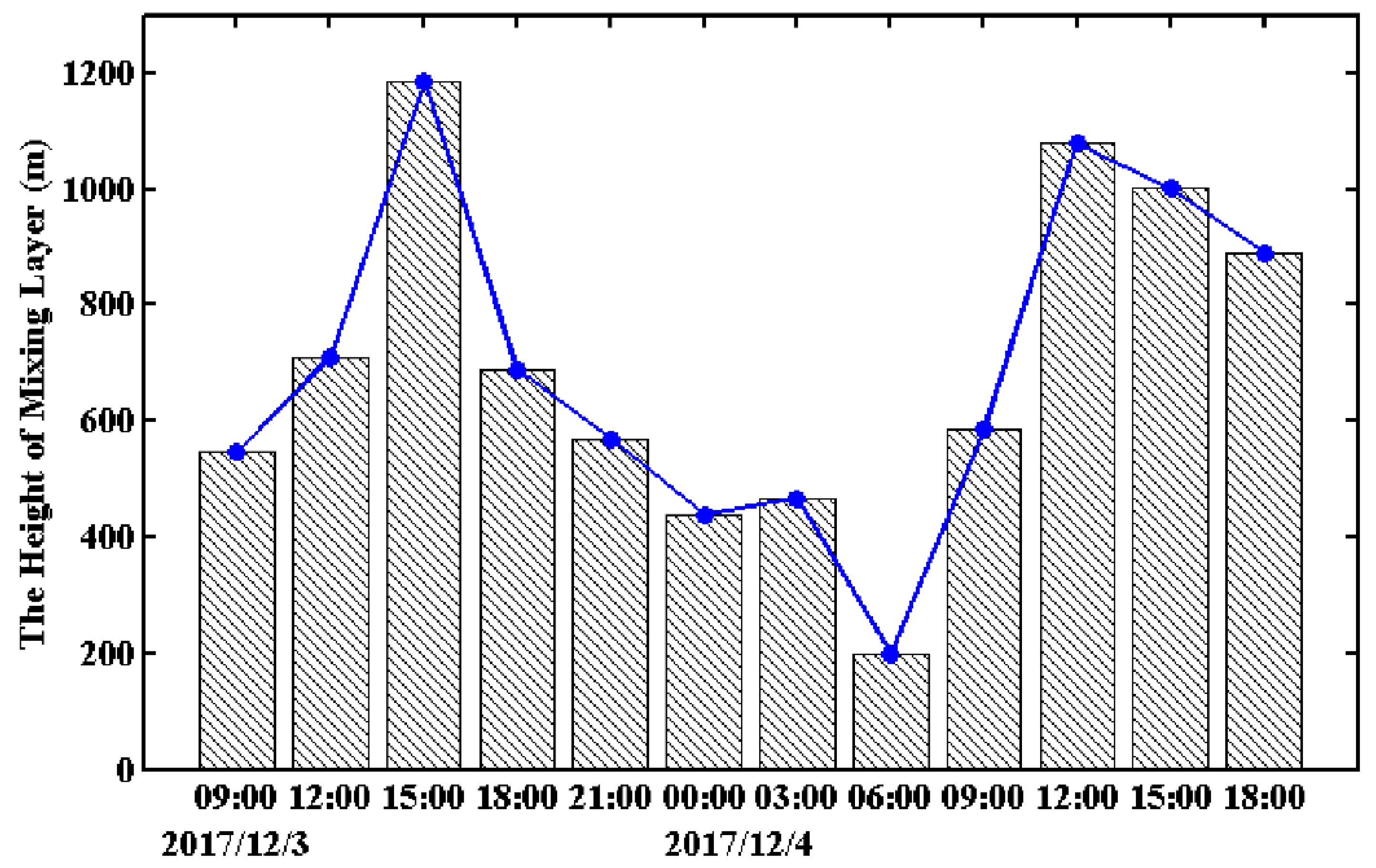
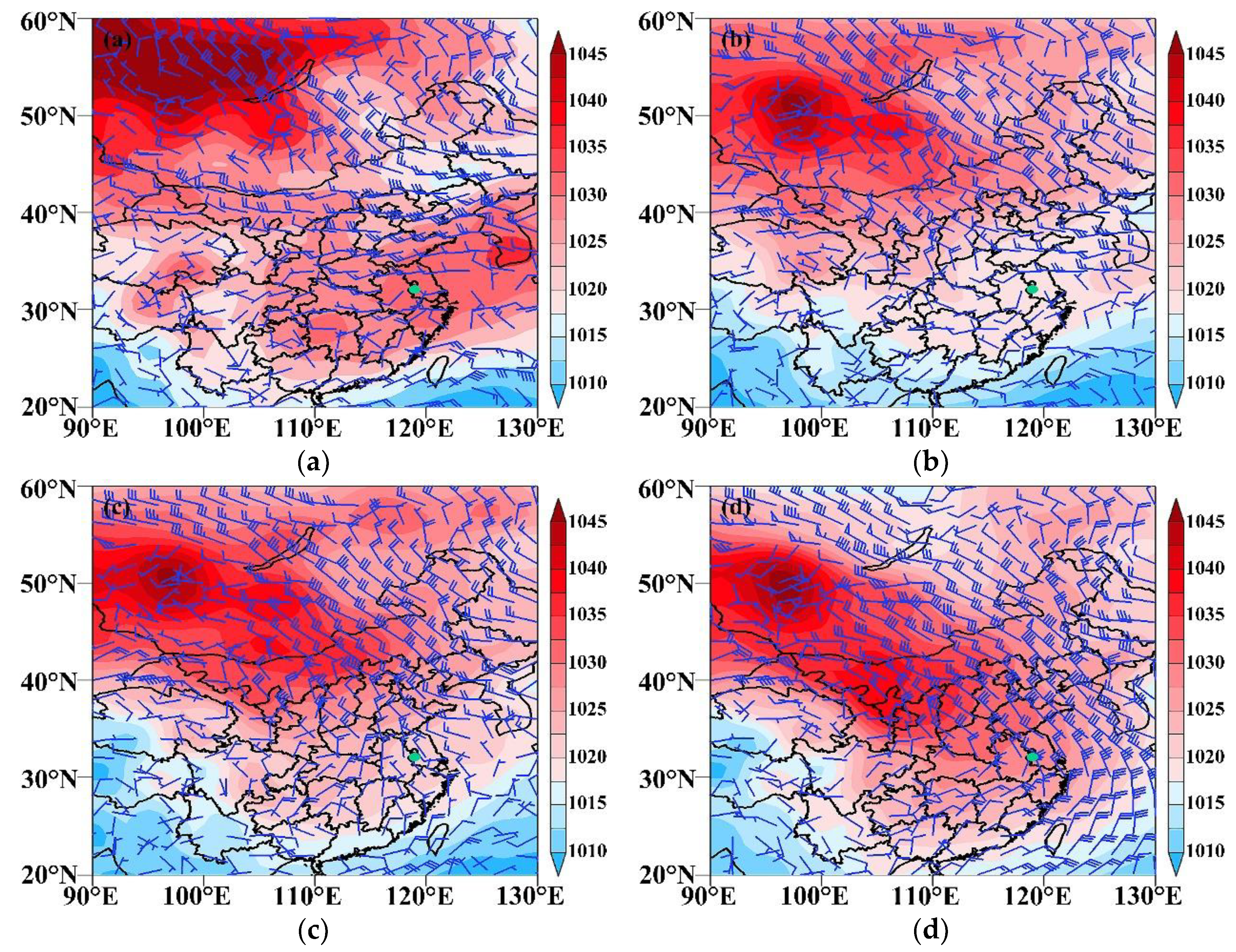
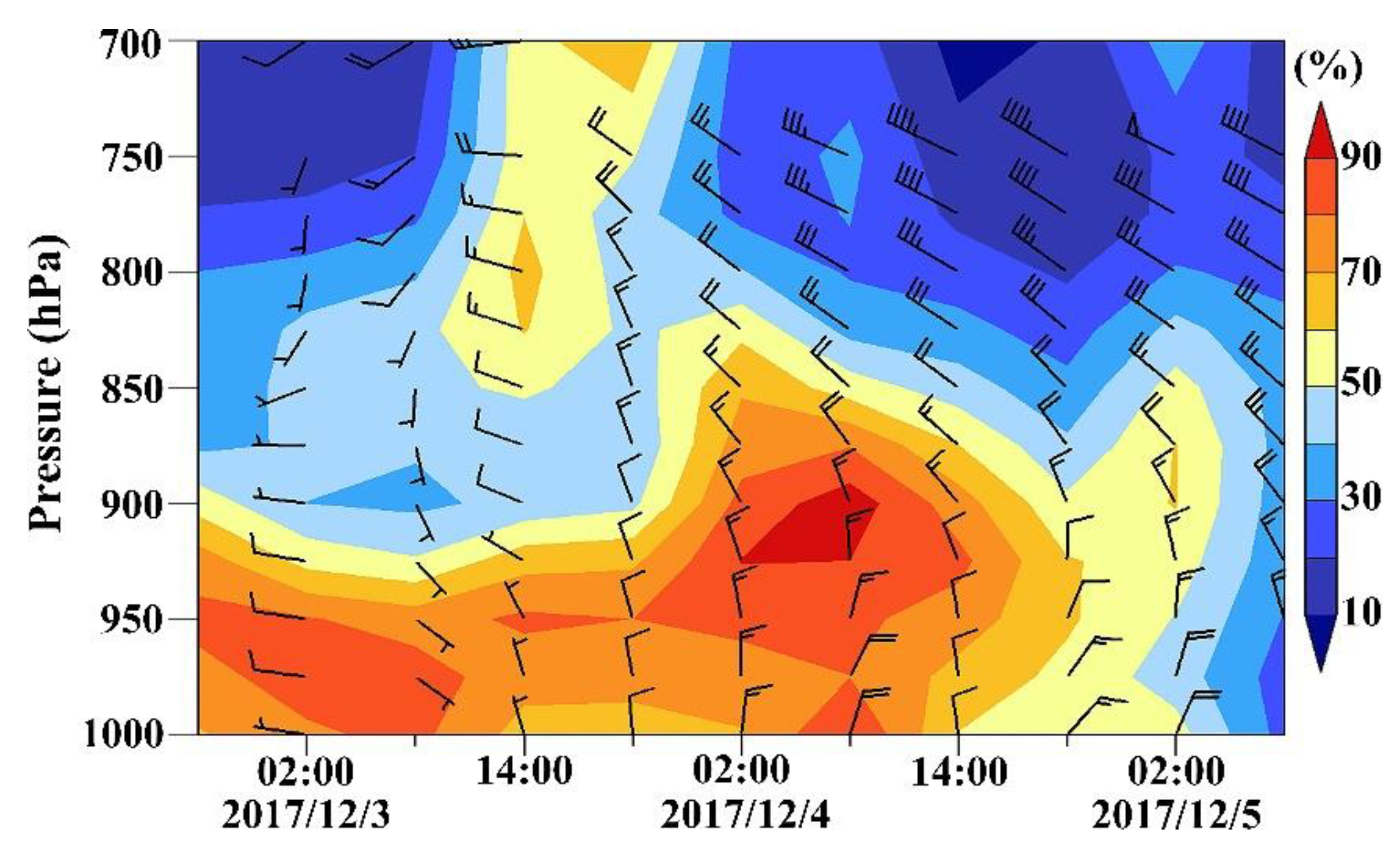
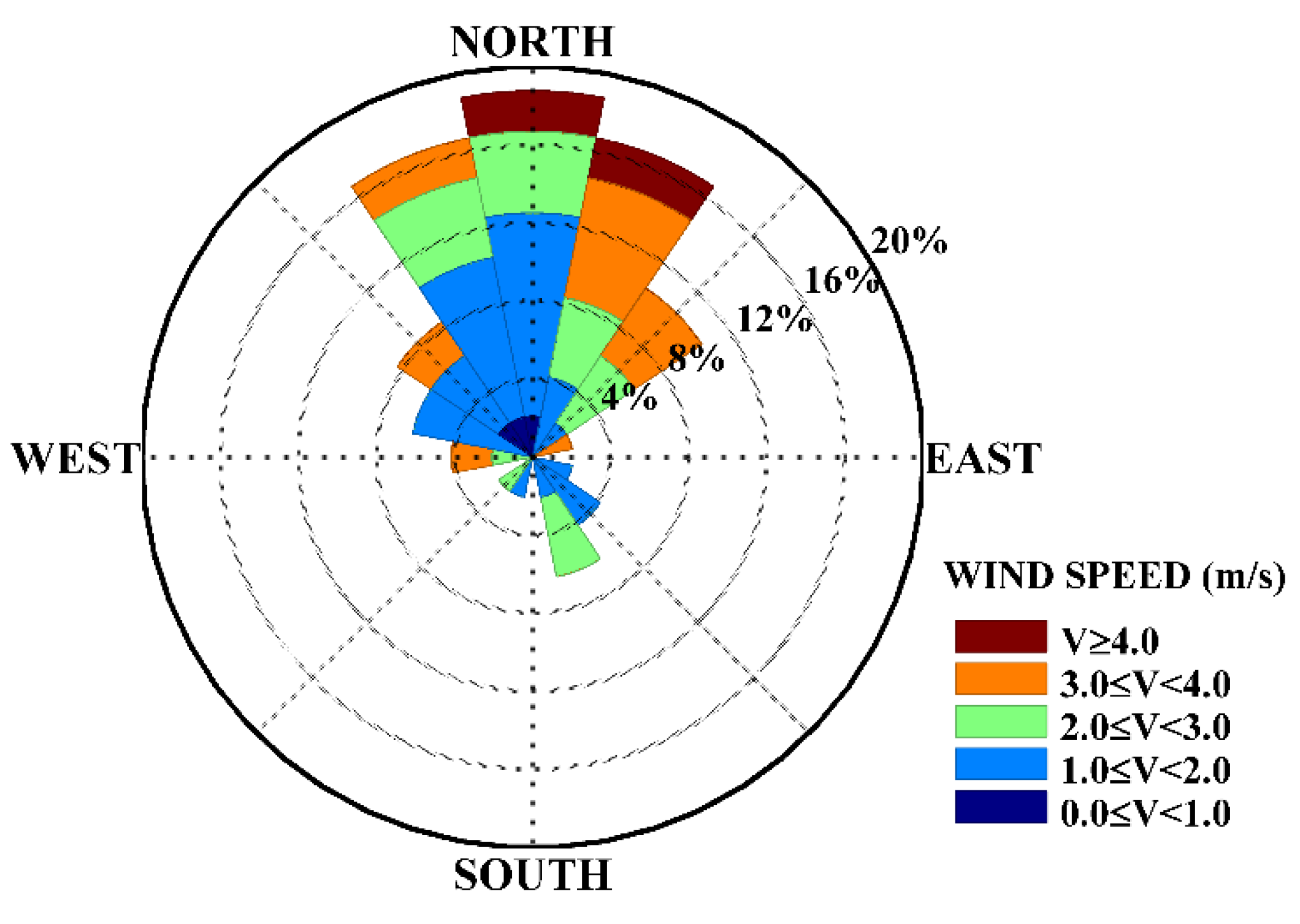
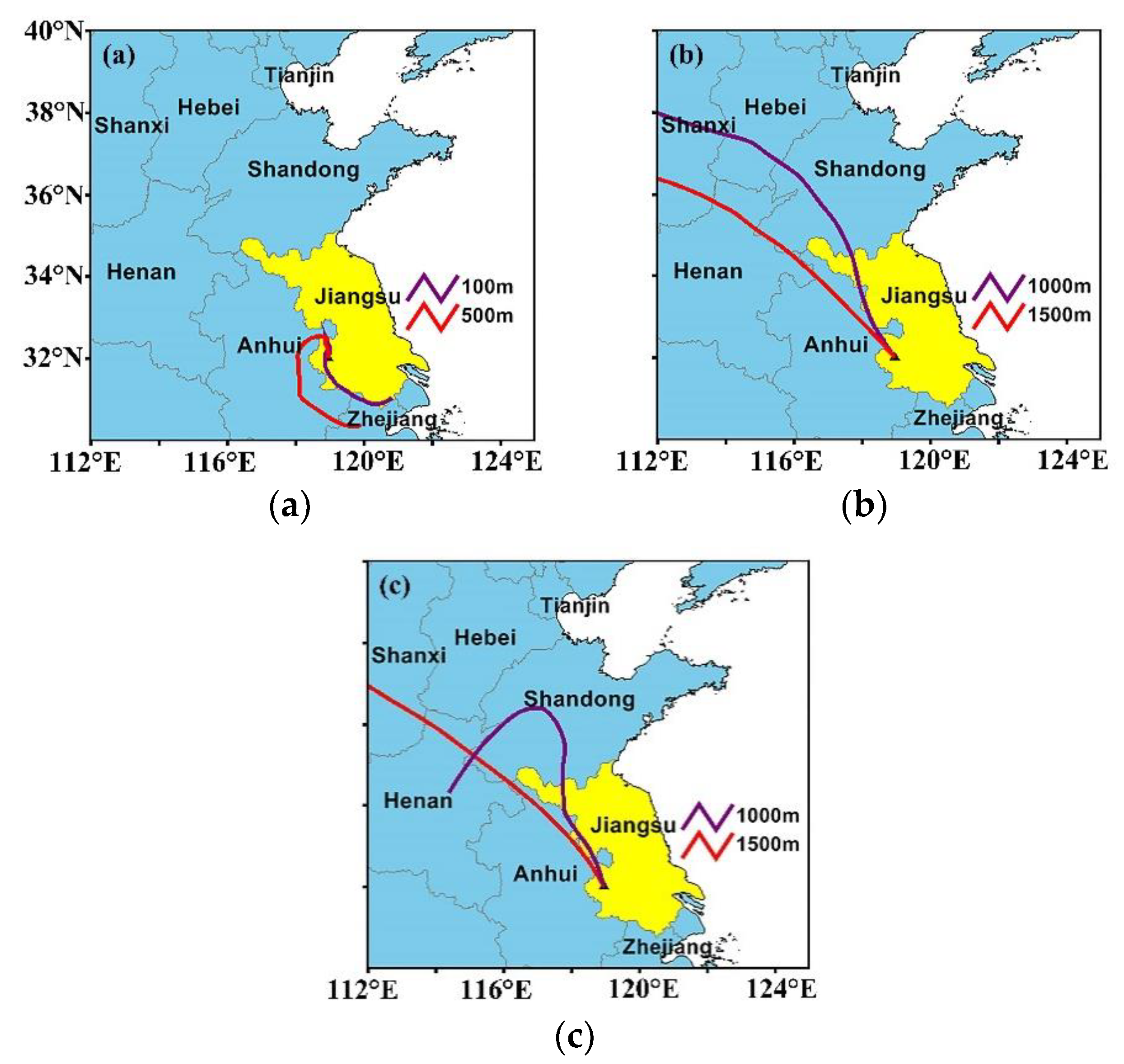
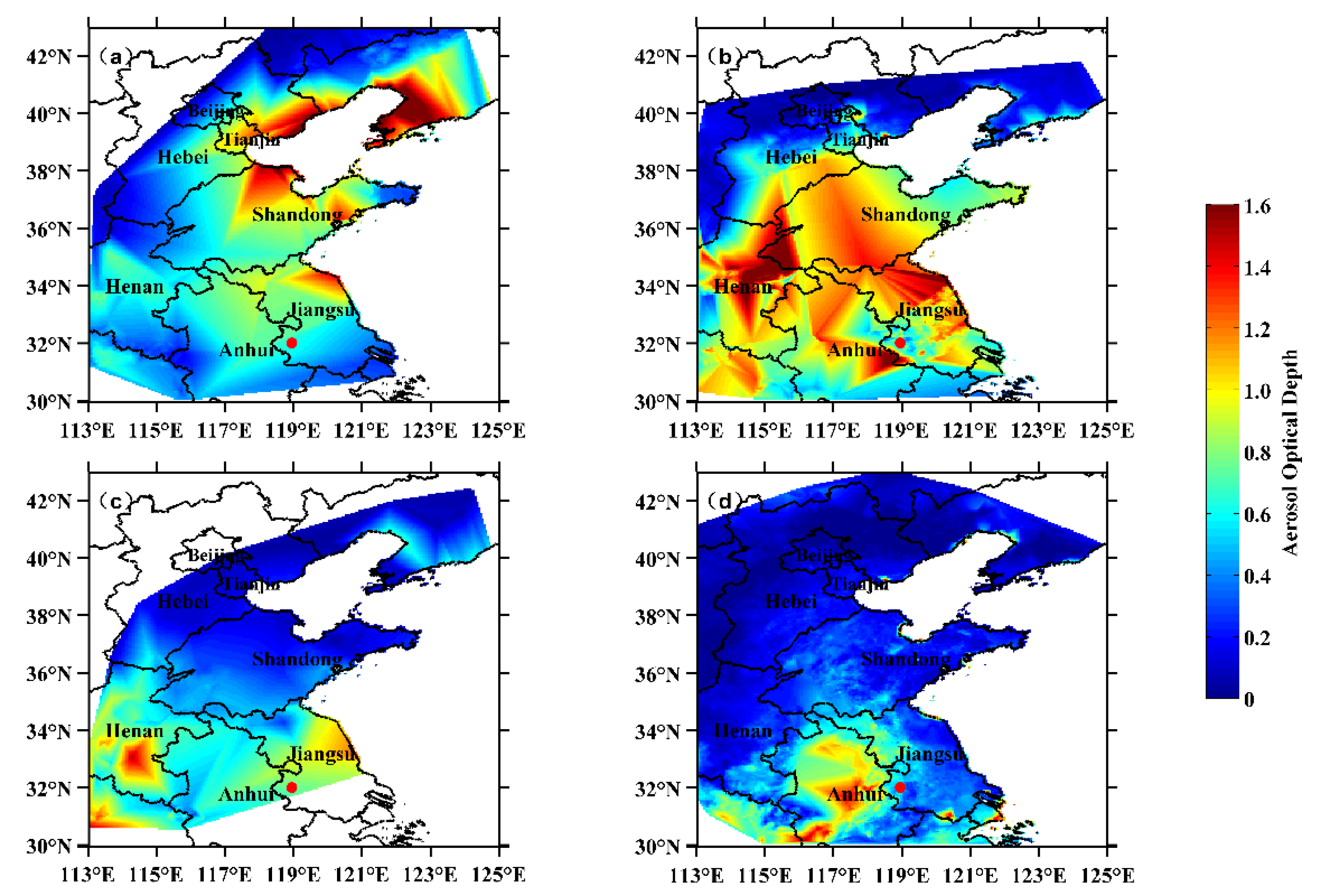
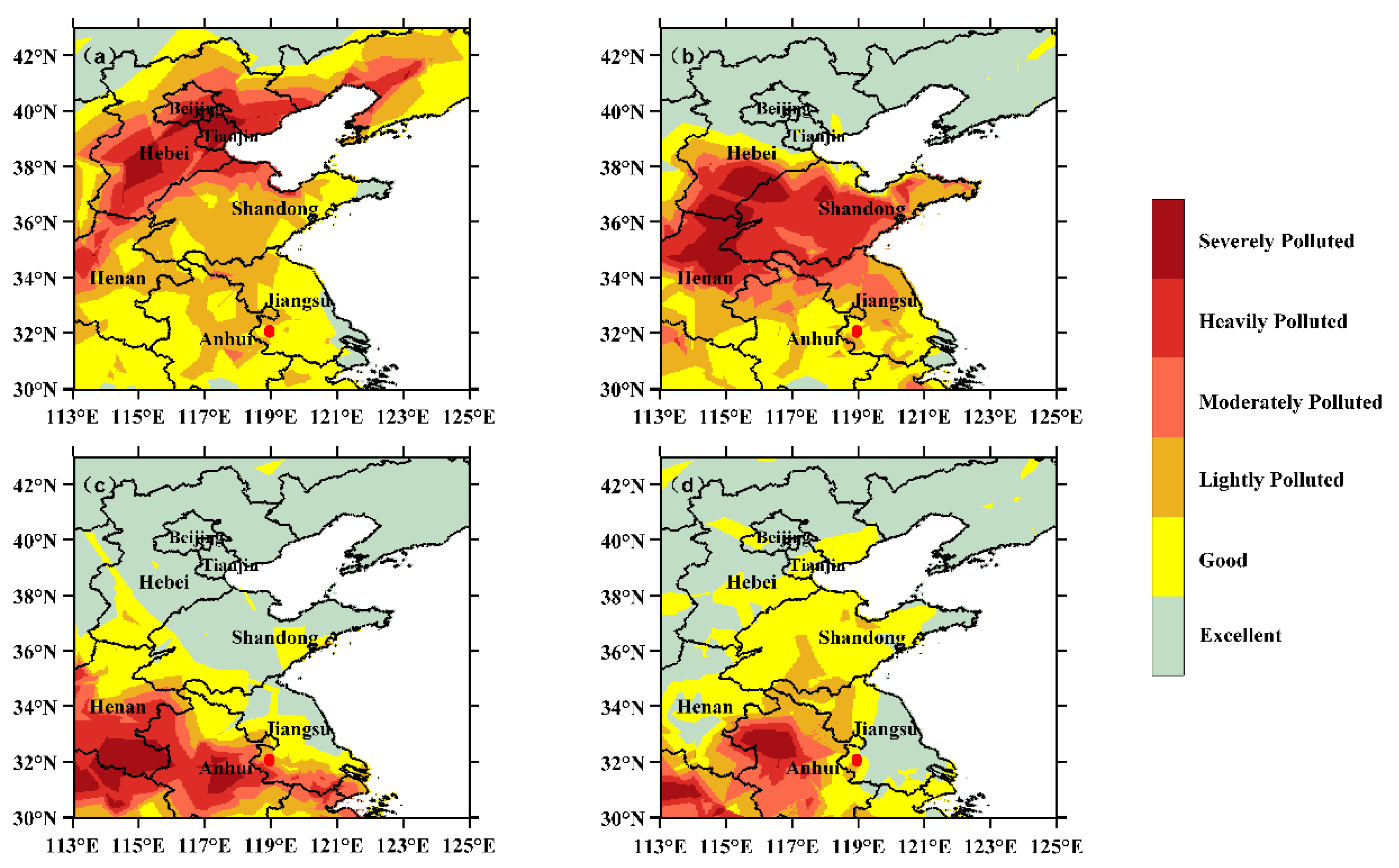
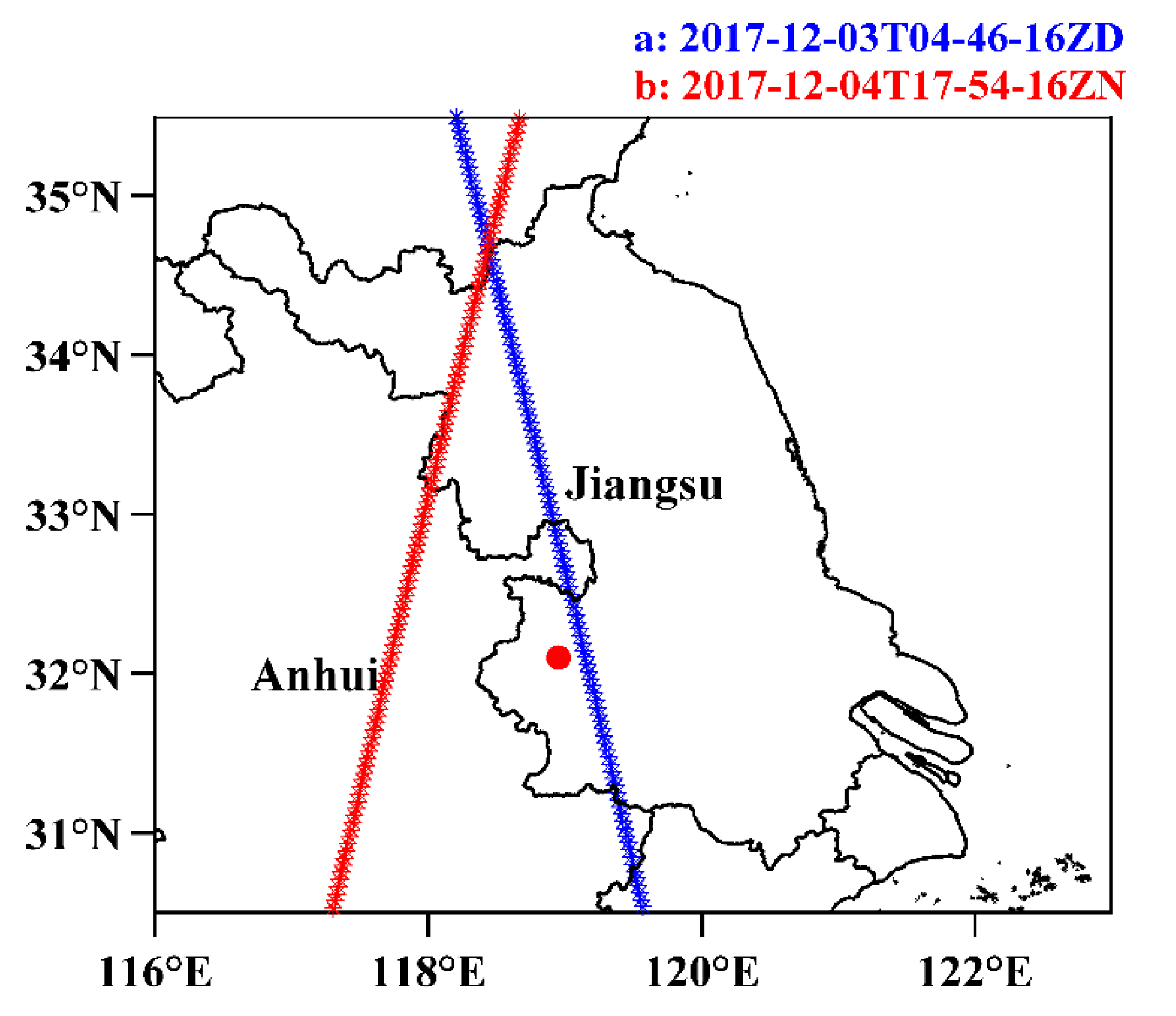
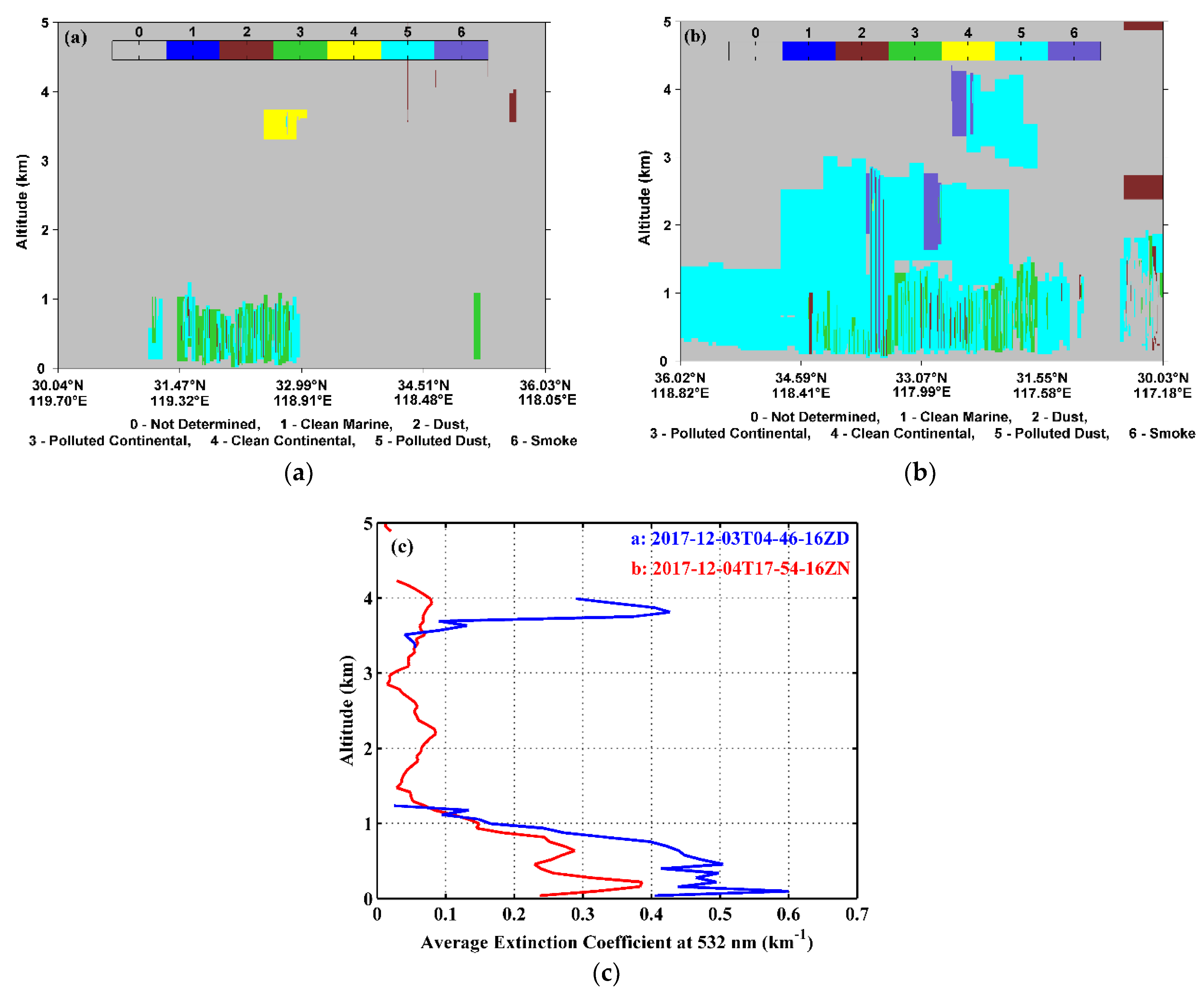
| Flight ID | Takeoff Time | Flight ID | Take off Time | Flight ID | Takeoff Time |
|---|---|---|---|---|---|
| A1 | 09:00 LST 3 December | B1 | 21:00 LST 3 December | C1 | 09:00 LST 4 December |
| A2 | 12:00 LST 3 December | B2 | 00:00 LST 4 December | C2 | 12:00 LST 4 December |
| A3 | 15:00 LST 3 December | B3 | 03:00 LST 4 December | C3 | 15:00 LST 4 December |
| A4 | 18:00 LST 3 December | B4 | 06:00 LST 4 December | C4 | 18:00 LST 4 December |
| Date | Taiyuan (Shanxi) | Shijiazhuang (Hebei) | Zhengzhou (Henan) | Jinan (Shandong) | Bengbu (Anhui) | |||||
|---|---|---|---|---|---|---|---|---|---|---|
| AQI | Air Quality Level | AQI | Air Quality Level | AQI | Air Quality Level | AQI | Air Quality Level | AQI | Air Quality Level | |
| 01 Dec | 110 | Lightly Polluted | 152 | Moderately Polluted | 168 | Moderately Polluted | 112 | Lightly Polluted | 92 | Good |
| 02 Dec | 172 | Moderately Polluted | 248 | Heavily Polluted | 216 | Heavily Polluted | 130 | Lightly Polluted | 109 | Lightly Polluted |
| 03 Dec | 109 | Lightly Polluted | 254 | Heavily Polluted | 286 | Heavily Polluted | 166 | Moderately Polluted | 144 | Lightly Polluted |
| 04 Dec | 58 | Good | 89 | Good | 190 | Moderately Polluted | 56 | Good | 155 | Moderately Polluted |
| 05 Dec | 72 | Good | 68 | Good | 73 | Good | 75 | Good | 158 | Moderately Polluted |
© 2018 by the authors. Licensee MDPI, Basel, Switzerland. This article is an open access article distributed under the terms and conditions of the Creative Commons Attribution (CC BY) license (http://creativecommons.org/licenses/by/4.0/).
Share and Cite
Zhou, S.; Peng, S.; Wang, M.; Shen, A.; Liu, Z. The Characteristics and Contributing Factors of Air Pollution in Nanjing: A Case Study Based on an Unmanned Aerial Vehicle Experiment and Multiple Datasets. Atmosphere 2018, 9, 343. https://doi.org/10.3390/atmos9090343
Zhou S, Peng S, Wang M, Shen A, Liu Z. The Characteristics and Contributing Factors of Air Pollution in Nanjing: A Case Study Based on an Unmanned Aerial Vehicle Experiment and Multiple Datasets. Atmosphere. 2018; 9(9):343. https://doi.org/10.3390/atmos9090343
Chicago/Turabian StyleZhou, Shudao, Shuling Peng, Min Wang, Ao Shen, and Zhanhua Liu. 2018. "The Characteristics and Contributing Factors of Air Pollution in Nanjing: A Case Study Based on an Unmanned Aerial Vehicle Experiment and Multiple Datasets" Atmosphere 9, no. 9: 343. https://doi.org/10.3390/atmos9090343





